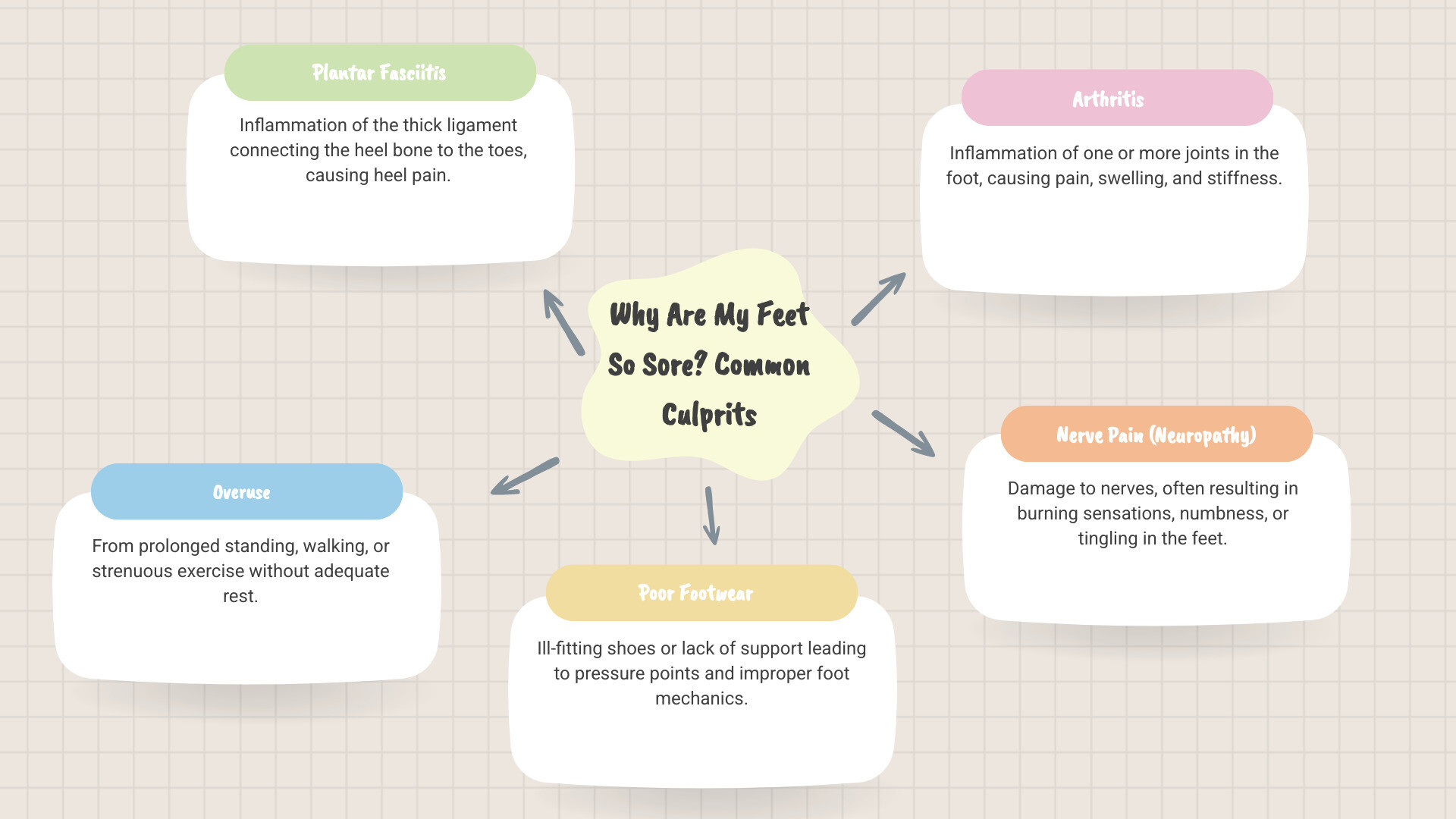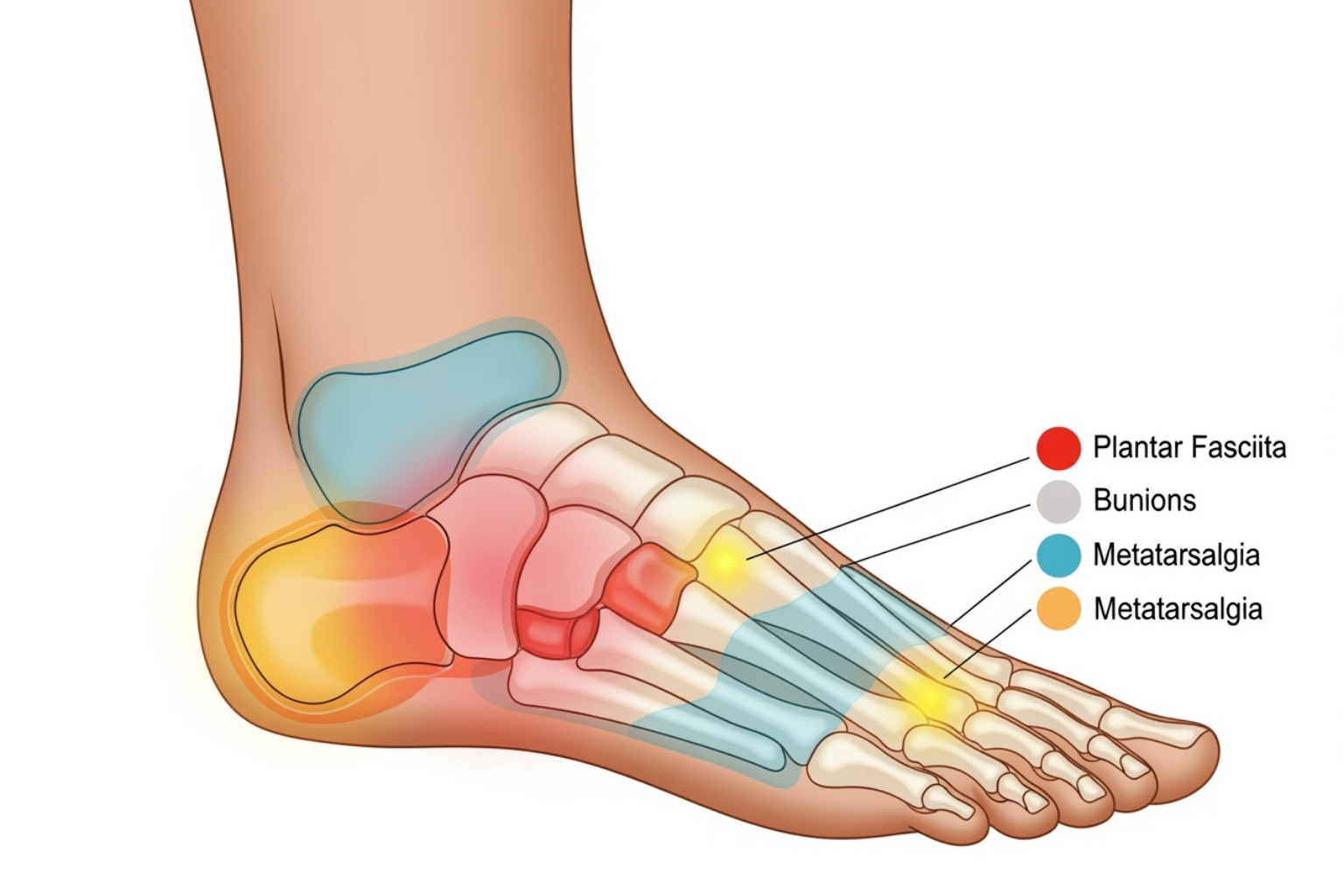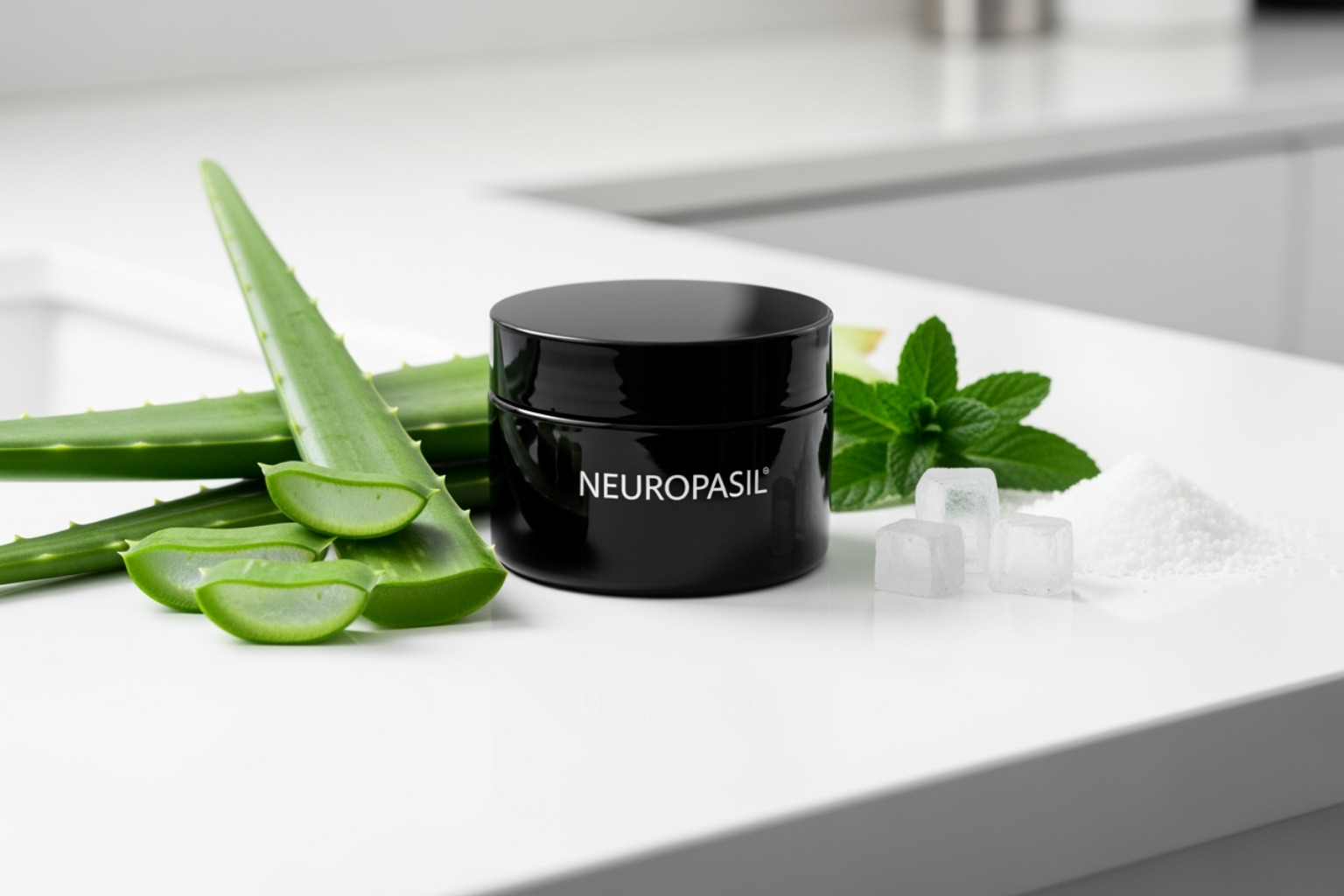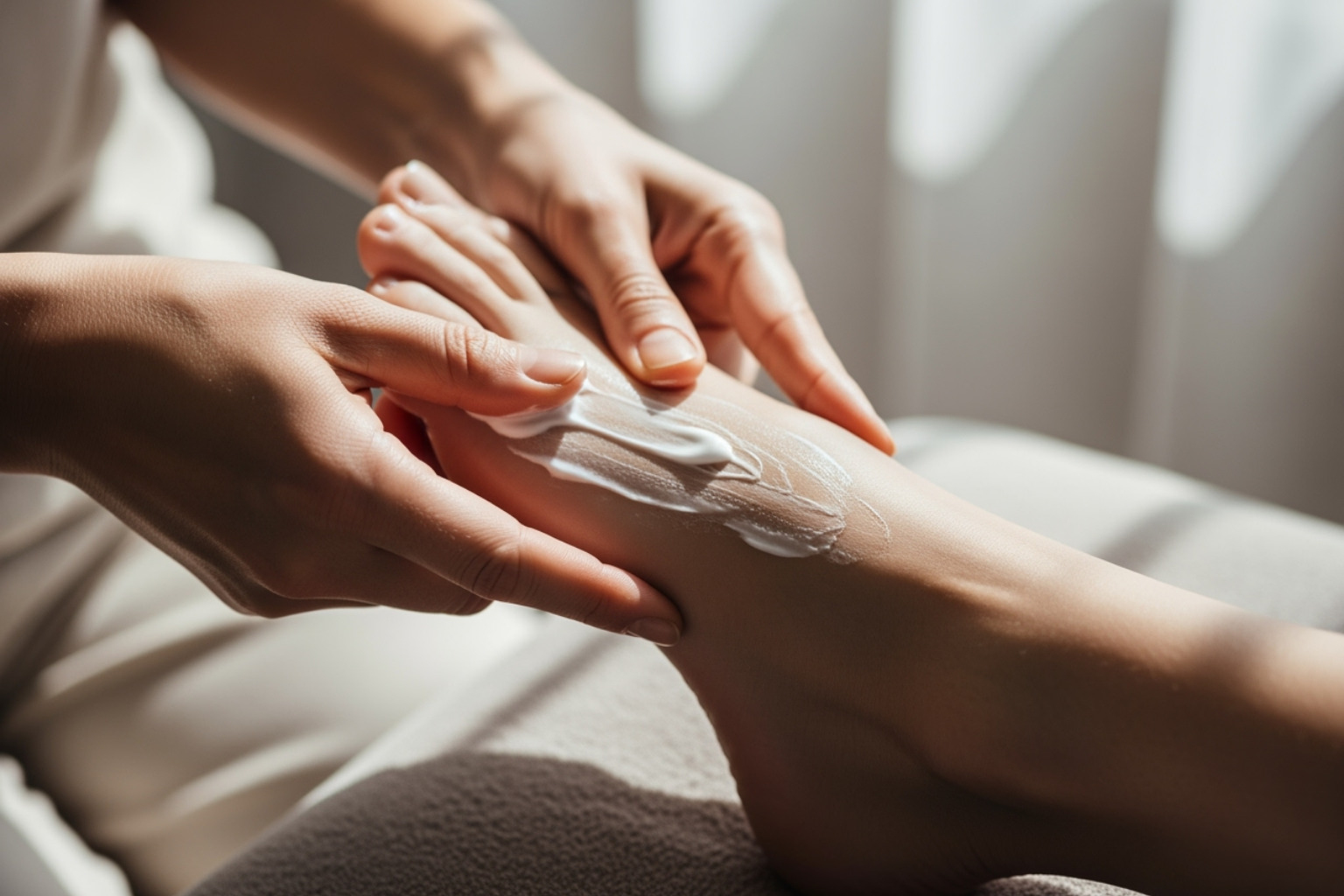Why Finding the Right Relief for Aching Feet Matters
If you're searching for the best foot cream for sore feet, you're in good company. Studies show that up to 77% of people experience significant foot pain, making effective relief crucial for daily comfort and mobility.
Quick Answer: Top Solutions for Sore Feet
- For Inflammatory Pain - Look for NSAIDs like diclofenac sodium.
- For Nerve Pain & Cooling Relief - Choose menthol and aloe-based formulas like Neuropasil.
- For Deep Muscle Soreness - Try capsaicin-based warming creams.
- For Cracked Heels with Pain - Use urea and lactic acid combinations.
- For Budget-Friendly Relief - Consider arnica-based natural creams.
Whether you're dealing with plantar fasciitis, overuse from standing all day, or post-workout soreness, the right topical cream can provide targeted relief. The skin on your feet is up to five times thicker than elsewhere, so regular lotions often can't penetrate deeply enough. The best foot creams combine pain-relieving ingredients like menthol or NSAIDs with moisturizers that help them absorb through this thick skin barrier.
I'm Tony Enrico, and at Neuropasil, I've spent years developing formulations to help people find real relief from nerve pain and muscle aches. My mission is to ensure no one has to live at the mercy of pain, especially when natural, fast-acting solutions exist.

Why Are My Feet So Sore? Understanding the Common Culprits
Your feet carry you through thousands of steps daily, so when they hurt, it's a major challenge. Before finding the best foot cream for sore feet, it helps to understand the cause of your discomfort.

Plantar Fasciitis: This is a leading cause of foot pain we see at Neuropasil. Inflammation of the plantar fascia—the tissue connecting your heel to your toes—causes a sharp, stabbing pain in your heel or arch, often worst with the first steps in the morning.
Muscle Strain and Overuse: Spending all day on your feet, a long hike, or an intense workout can exhaust and inflame the muscles in your feet. This results in a deep, throbbing ache, especially after standing on hard surfaces.
Ill-Fitting Shoes: Shoes without proper support create pressure points and force your feet into unnatural positions. Over time, this can lead to bunions, corns, and general soreness.
Arthritis: As we age, arthritis can affect the many joints in our feet, causing stiffness, swelling, and aching pain as the protective cartilage wears down.
Nerve Pain (Neuropathy): This feels different from muscle soreness, often described as a burning, tingling, or shooting pain. Caused by conditions like diabetes or chemotherapy, nerve pain requires targeted topical relief.
Underlying most of these conditions is inflammation. Your body's response to damage or irritation causes swelling, warmth, and pain. Understanding that inflammation is often the root cause helps explain why certain topical ingredients are so effective.
Decoding the Label: Key Ingredients in the Best Foot Cream for Sore Feet
Choosing the best foot cream for sore feet can be confusing. At Neuropasil, we've studied what works, and understanding these ingredients is key to finding real relief. Topical creams deliver active ingredients directly to the source of pain, offering faster relief with fewer side effects than oral medications.
Here's a breakdown of key ingredients:
Menthol & Camphor: These are powerful counterirritants that create an immediate cooling or warming sensation. This effect distracts your nerves from pain signals while helping to reduce muscle soreness and inflammation. The cooling sensation from menthol provides that instant "ahh" moment for tired feet.
Diclofenac: This NSAID (nonsteroidal anti-inflammatory drug) is a game-changer for inflammatory pain from conditions like arthritis or plantar fasciitis. Found in products like Voltaren, it penetrates the skin to target and reduce the substances in your body that cause pain and inflammation.
Arnica: A plant-based ingredient used for generations, arnica is nature's anti-inflammatory. It's excellent for reducing swelling, soothing bruises, and easing general muscle aches.
Aloe Vera: More than just a moisturizer, aloe vera soothes irritated skin, reduces redness, and has its own pain-relieving properties. In our Neuropasil formula, it creates a gentle base that helps other active ingredients penetrate more effectively.
Urea: This is a crucial but often overlooked ingredient. Urea is a humectant that draws moisture into the skin and a keratolytic that breaks down dead skin. This is vital for the thick skin on your feet, as it softens tough calluses and helps pain-relieving ingredients penetrate deeper.
Essential Oils: Peppermint and eucalyptus add an invigorating, cooling sensation, while lavender offers calming properties that promote relaxation.
When developing Neuropasil, we carefully selected menthol, aloe vera, and urea to work synergistically. Each ingredient improves the others to deliver fast-acting, targeted relief for nerve pain, muscle soreness, and more. The right combination of ingredients is what makes a foot cream truly effective.
Our Top Picks: 5 Creams to Soothe Sore Soles
Finding the best foot cream for sore feet isn't a one-size-fits-all proposition. Your feet might be aching from inflammation, nerve irritation, muscle fatigue, or even dry, cracked skin—and each of these challenges responds best to different ingredients and formulations. We've taken our years of experience in pain relief and combined it with careful research to bring you a thoughtful roundup of creams that truly deliver results for specific types of foot discomfort.
Best Overall for Inflammatory Pain: Voltaren Pain Relief Gel
When inflammation is driving your foot pain—perhaps from arthritis in your joints or general inflammatory discomfort—Voltaren Pain Relief Gel stands out as a powerful solution. What makes it so effective? It contains diclofenac sodium, a potent NSAID (Nonsteroidal Anti-inflammatory Drug) that doesn't just mask your pain temporarily. Instead, it actually reduces the inflammation causing your discomfort at its source. This is crucial because inflammatory pain needs more than surface-level relief. The gel formulation allows you to apply it precisely where you need it, and its powerful anti-inflammatory properties make it an excellent choice when your feet, ankles, or even your back are hurting from inflammation.
Best Natural Option for Nerve Pain and Cooling Relief: Neuropasil
When nerve pain is making your feet burn, tingle, or ache—or when you simply need immediate, refreshing relief—we're proud to recommend our own Neuropasil creams. This is what we've dedicated ourselves to perfecting, and we've heard from countless customers whose lives have been changed by finding effective, natural relief.

Our formula centers around three powerhouse natural ingredients that work together beautifully. First, there's menthol, which creates that wonderfully cooling sensation that immediately distracts from pain and helps calm irritated nerves. We pair this with aloe vera, nature's own soother, which not only calms inflamed skin but also helps carry our active ingredients deeper where they're needed most. And we include urea—yes, the same hydrating compound we discussed earlier—because it's essential for penetrating the thick skin of your feet and ensuring our pain-relieving ingredients can reach the source of your discomfort. What makes Neuropasil special is that it's specifically formulated for the unique challenges of nerve pain, whether you're dealing with neuropathy, plantar fasciitis, or general aching feet. This is truly the best foot cream for sore feet when nerve pain and natural ingredients are your priorities. Learn more about how we approach foot pain relief at Neuropasil.
Best for Deep-Penetrating Warmth: A Capsaicin-Based Cream
Sometimes your sore feet crave warmth instead of cooling. If you're dealing with deep muscle soreness or chronic joint stiffness, a capsaicin-based cream might be exactly what you need. Capsaicin—the compound that gives chili peppers their heat—creates a warming sensation that increases blood flow to the area, which promotes relaxation in tired muscles and can ease persistent aches. Just remember that capsaicin can produce a strong warming sensation, so always start with a small amount and wash your hands thoroughly after application.
Best for Cracked Heels and Soreness: A Moisturizing & Pain-Relief Combo
Here's something we see all the time: sore feet that are also dealing with dry, cracked heels. Those deep fissures in your skin aren't just unsightly—they can be genuinely painful. For this double challenge, you need a cream that tackles both the pain and the dryness simultaneously. Look for formulations that combine urea with exfoliating ingredients like salicylic acid and lactic acid. These ingredients draw moisture deep into your skin, soften tough areas, and gently exfoliate, which significantly reduces the pain that comes with deep cracks. Products like PurOrganica Urea 40% Foot Cream or Dr. Scholl's Dry, Cracked Foot Repair Ultra-Hydrating Foot Cream are excellent examples of this approach.
Best Budget-Friendly Option: An Arnica-Based Cream
Relief shouldn't require emptying your wallet. For everyday muscle aches, minor bruising, and general foot soreness, an arnica-based cream offers effective relief at an accessible price point. Arnica Montana is a time-tested natural anti-inflammatory that helps reduce swelling and soothes tired, achy muscles. While it might not deliver the intense power of other ingredients, for mild to moderate discomfort, arnica creams work beautifully and are perfect to keep on hand for regular foot care.
How to Choose and Use Your Foot Cream for Maximum Relief
Finding the best foot cream for sore feet is the first step; using it correctly is what open ups its full potential. Proper application can dramatically improve your results.

Cream vs. Gel: What's the Difference for Pain Relief?
Gels are typically water-based and absorb quickly without a greasy residue. They are excellent for delivering ingredients like diclofenac and provide an instant cooling sensation, making them a great "get up and go" option.
Creams are thicker and more emollient, offering significant moisturizing benefits alongside pain relief. They are ideal for tackling both pain and dry, cracked skin. Our Neuropasil creams fall into this category, providing rich moisture as part of a daily or nighttime routine.
The choice depends on your texture preference and whether your feet need extra hydration.
A Step-by-Step Guide to Applying Foot Cream
Start with clean, dry feet. The best time is after a warm shower or foot bath, as the warmth softens the skin and improves absorption.
Use a pea-sized amount. Start small and add more if needed. Over-applying won't make it work faster and can feel greasy.
Massage thoroughly. Work the cream into your skin until it's fully absorbed, focusing on high-stress areas like your arches and heels. The massage itself stimulates blood flow and helps muscles relax.
Be consistent. For chronic pain, apply three to four times daily as directed on the product label to maintain steady relief.
Pro Tip: After your nighttime application, slip on a pair of cotton socks. This locks in moisture and keeps the active ingredients working on your feet, not your sheets.
Safety First: Precautions and Potential Side Effects
Always do a patch test. Apply a small amount to your inner wrist and wait 24 hours to check for any irritation before wider use.
Avoid broken skin. Never apply pain relief creams to open wounds, cuts, or irritated areas, as this can cause a severe reaction.
Wash your hands. Immediately after application, wash your hands with soap and water, especially when using creams with menthol or capsaicin, to avoid accidental contact with your eyes or other sensitive areas.
Know when to see a doctor. If pain persists for more than seven days, worsens, or is accompanied by swelling and fever, consult a healthcare professional.
Read the label. Be aware of potential interactions, especially if you are taking other medications, are pregnant, or are breastfeeding. Always consult a doctor before using on children.
Frequently Asked Questions About Foot Pain Relief
We hear many of the same questions from people searching for the best foot cream for sore feet. Here are answers to the most common ones.
How do I choose the best foot cream for my sore feet?
The right cream depends on the cause of your pain.
- For a dull, tired ache (muscle fatigue), look for menthol or arnica.
- For sharp, burning, or tingling sensations (nerve pain), choose a formula designed for neuropathy, like our Neuropasil cream with menthol, aloe, and urea.
- For joint pain from arthritis, an NSAID like diclofenac can reduce inflammation.
- For sore, cracked feet, you need a combination of pain relief and intense moisturizers like urea or lactic acid. Always read customer reviews for real-world feedback and perform a patch test before regular use.
How quickly do topical pain relief creams work?
This varies by ingredient.
- Menthol and camphor offer an almost immediate cooling or warming sensation that distracts your brain from pain signals. Many Neuropasil users feel this soothing effect within minutes.
- Anti-inflammatory ingredients like diclofenac or arnica work on the root cause of pain. You may feel some initial comfort, but their full benefits often develop over several hours or days of consistent use.
- Capsaicin creams build up their warming effect over a few days of regular application.
Can I use a foot pain cream for other body parts like my back or joints?
Usually, yes. The active ingredients in foot creams—menthol, diclofenac, capsaicin, etc.—are the same ones used for general muscle and joint pain. However, always check the product label first. Some formulas designed for the thick skin on feet may be too strong for more sensitive areas. Products like Voltaren and our Neuropasil cream are formulated for versatile use on the back, neck, joints, and for conditions like sciatica and fibromyalgia. Just follow the label's directions, apply only to intact skin, and wash your hands after use.
Conclusion: Put Your Best Foot Forward
We hope this guide has illuminated the path to finding the best foot cream for sore feet and understanding how to use it effectively. From inflammatory conditions to nerve pain, cracked heels, and general muscle soreness, a targeted topical solution can be a game-changer in your daily self-care routine.
Your feet are our foundation, and they deserve the same care and attention we give the rest of our bodies. By understanding the causes of your pain, decoding ingredient labels, and applying creams correctly, you're taking proactive steps toward sustained comfort. Whether you choose an NSAID gel like Voltaren for inflammation, a natural blend like Neuropasil for nerve pain and cooling relief, or a urea-rich cream for cracked heels, the goal remains the same: to alleviate discomfort and improve your quality of life.
Don't let sore feet hold you back from living your life to the fullest. With the right foot cream, you can put your best foot forward, ready to tackle whatever comes your way. We are committed to helping you find that relief, naturally and effectively.
References
We've drawn on a wealth of credible sources to bring you the most accurate and helpful information about finding the best foot cream for sore feet. Understanding the science behind pain relief and the prevalence of foot discomfort helps us all make better choices for our health.
Research shows that foot pain is incredibly common, affecting up to 77% of people at some point in their lives according to findings published in the Journal of Foot and Ankle Research. You can read more about the prevalence of foot pain in the population in their comprehensive study from 2009. This statistic reminds us that if you're dealing with sore feet, you're far from alone.
To understand the common culprits behind foot pain discussed in this article, such as plantar fasciitis, arthritis, and nerve pain, we consulted comprehensive guides from leading health authorities like the Mayo Clinic. These resources confirm the underlying causes and symptoms associated with different types of foot soreness.
The global foot care products market continues to grow significantly, with Allied Market Research reporting in its 2022 market analysis that the industry is projected to reach USD 2.5 billion by 2032. This growth reflects how many of us are actively seeking effective solutions for foot comfort and pain relief.
When we talk about how topical pain relievers actually work, the Cleveland Clinic provides excellent educational resources. Their guide on topical pain relievers explains the mechanisms behind different active ingredients and how they deliver relief. The unique anatomy of the foot, including its significantly thicker skin, requires specialized formulations. As the American Academy of Dermatology explains, the skin on the feet is designed to be thicker and harder, which is why ingredients must be chosen for their ability to penetrate this barrier. For those specifically interested in diclofenac topical medications like Voltaren, MedlinePlus offers detailed information on Diclofenac Topical, including proper usage, potential side effects, and precautions.
We've also referenced insights from the Foot & Ankle Centers regarding how foot moisturizers can be among the best treatments for dry, cracked heels and feet, which often contribute to soreness. Their 2024 article on the best foot creams for dry and cracked heels provides valuable perspective on ingredient effectiveness.
For urea-based creams, which we've highlighted for their exceptional hydration and penetration benefits, the Cleveland Clinic has published helpful information about urea cream, gel, lotion, ointment, and nail lacquer, explaining why this ingredient is so effective for foot care.
Additional product recommendations and comparative analysis came from trusted consumer publications including Business Insider, NBC News, and Allure, who regularly test and review foot care products. We've also reviewed product information directly from manufacturer websites and verified customer reviews on platforms like Amazon.ca to ensure our recommendations reflect real-world experiences.
Of course, we're proud to share information about our own Neuropasil formulations and our commitment to natural, effective pain relief. You can learn more about our approach and products at Neuropasil.com.
We believe in transparency and evidence-based recommendations. Every claim we make is supported by research, clinical understanding, or verified customer experiences. Your trust matters to us, and we're committed to providing information that truly helps you find relief and improve your quality of life.














